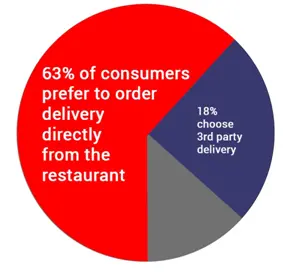Ozdemir and Caliskan (2014) found that when restaurants are creating their menus there are four menu management issues that arise: menu planning, menu design, menu operations, and menu management. All these areas are critical to a menu’s success and can make a difference in sales for restaurants and guests’ impressions. Menu engineering has been found to increase sales by 10-15%.
There are many solutions to get your menu at a level that will attract customers’ attention and increase your sales, and we have you covered. In this article we explain seven different tips that will help you create an excellent menu.
1. Less is more
When guests come into your restaurant they have already been stressed from choosing which restaurant to go to and, giving them hundreds more options for what to eat makes the dine-in experience even less enjoyable. You want to ensure that your menu has variety but is also limited to not overwhelm guests. Having a limited number of items on your menu with a large variety of the type of items will help guests still have options and encourage them to try your star dishes instead of sticking to safe options like burgers.
The number of pages your menu is will depend on the number of dishes you have. But, once again, you want to keep it limited. It is suggested that you try to keep your menu length to 2 pages. It allows for customers to not feel too overwhelmed on the choices they have and once again helps encourage them to try out different dishes.
A limited number of items on your menu will also help your kitchen have fewer dishes and ingredients ready to be made at any moment. Staff would have less recipes to memorize and dishes to prepare allowing them to focus on their cooking and the quality of dishes. Having less dishes to prepare will also improve staffs’ consistency and quality of dishes.
Color is one of the most influential tools a designer has. It can set the tone and customers’ impressions of a restaurant. Your menu can be colorful but you want to keep the number of colors limited. When there are too many colors, a study showed that 93% of participants prefer a black & white menu over a colored menu as it is less overwhelming. Keeping the colors on your menu does not mean just having one. Using too much of one color can diminish the effect. It is suggested that you should try to stick to 3 colors. When deciding which colors to add to your menu, keep in mind color psychology. Cool colors like purple and blue can be hunger suppressants, but are also great for seafood restaurants. While warm colors like red, orange, and yellow are known for being hunger stimulants.
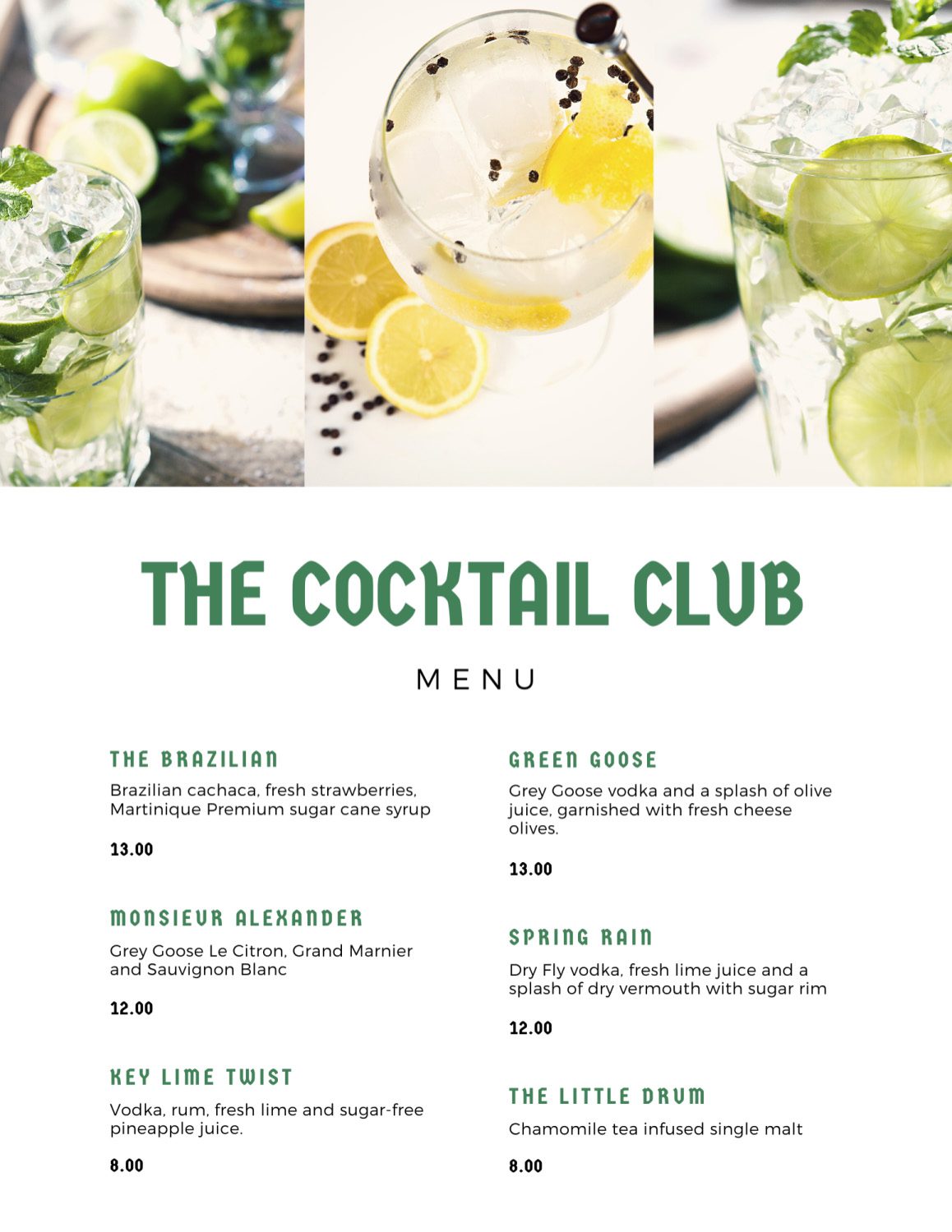
Content by Erika Escolero Orrego at TechRyde Inc.
2. Create categories
An organized menu can make it easier for customers to look through your menu, and categories lead to an organized menu. Sometimes customers come into your restaurant with their dish choice already in mind and categories can help them quickly find that meal and confirm your restaurant has it and its side options. For customers that do not have an idea of what dish they want to have, categories can help them effortlessly look at your restaurant’s many dish options. The faster customers can decide on their dish, the faster the whole dine-in experience can be and help have a fast table turnover.
When planning and creating your menu categories—once again like the colors and number of items in your menu —you want to keep them limited. For example, instead of having separate categories for wraps, sandwiches, tacos, etc, you can create a category that includes similar dishes and call it “Handhelds”. Having minimal categories with similar dishes within it can help customers only have to search in one area for a certain type of food which speeds up their decision-making process.
3. Placement matters
The layout of a menu can be crucial to its success. In the past, it has been said that customers were known to first look at the top-right corner of a menu before reading other areas. Now, a study shows that customers tend to read menus like a book—starting from the top-left—even more so when the menu is black and white.
For dishes or items that have different sizes, you want to keep them together. Placing the larger, more expensive, sizes of an item first has shown to increase check sizes by 4%, which is 20 times more than just allowing customers to look around for the larger size on their own.
Placing a dish’s price below its name and description rather than placing the price to the side of it will keep the focus on the dish itself rather than the price. With customers being focused on the dish, it can incentivize them to try the meal out for what it is rather than its price.
4. Descriptive descriptions & high-quality images
Descriptive dish descriptions and high-quality images can set the image for customers. It can make them imagine the meal and whether they would like it or not before ordering.
An experiment by Dr. Brian Wansink showed that descriptive wording increased sales by 27% as it helped customers visualize their meal and know exactly what they should be expecting. Through the same experiment, Dr. Wansink also found that descriptive descriptions improve a customer’s attitude towards the food, the restaurant, and repatronage. Repatronage is the decision of an individual to purchase a particular product or service. When writing a dish’s description you want to make sure you are keeping it short. If a dishes’ description is too long, customers could quickly lose interest and move on to another item with a smaller description.
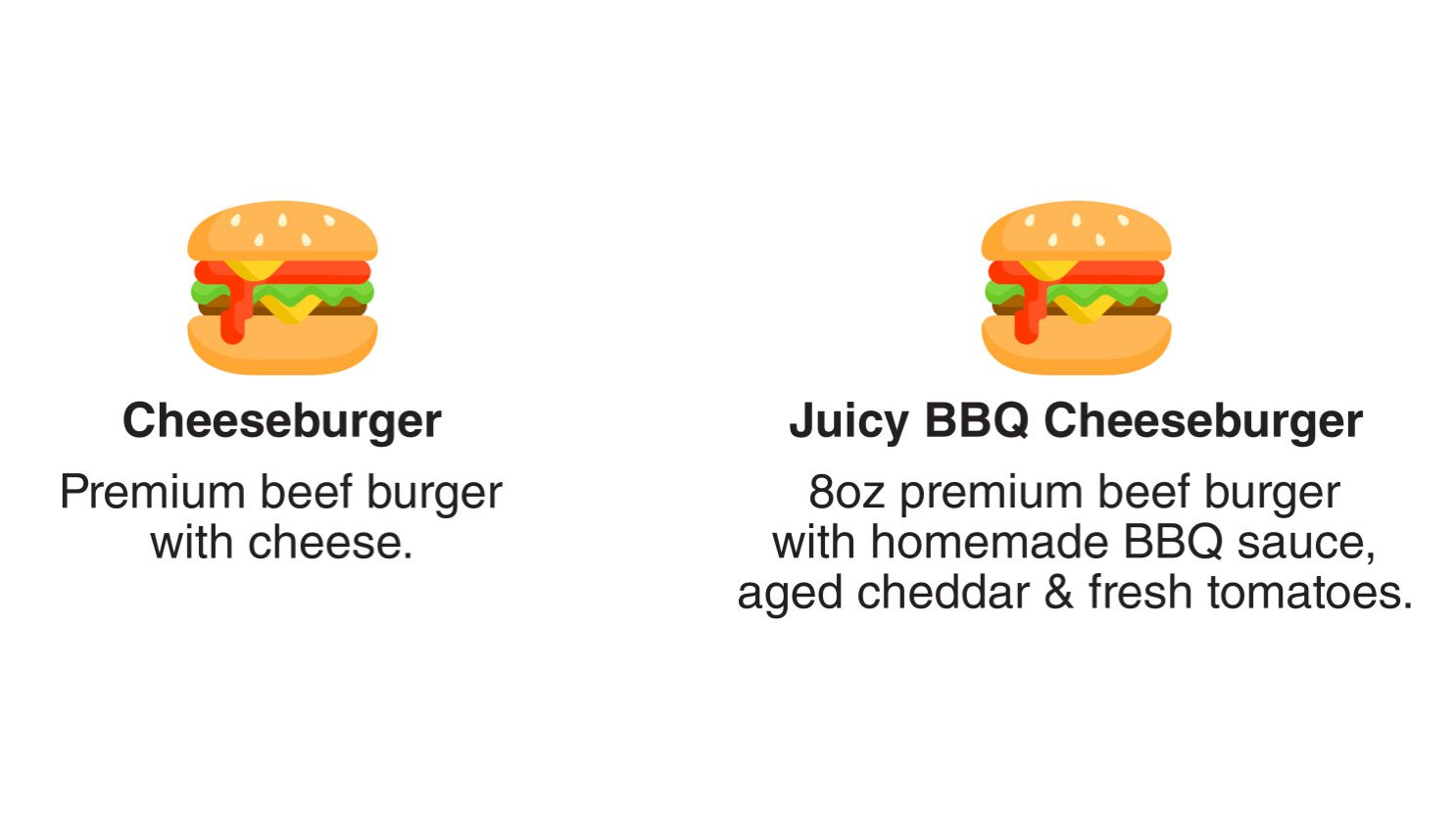
Content by Erika Escolero Orrego at TechRyde Inc.
Customers ‘eat’ with their eyes, making high-quality food images have a powerful effect on customers. Gregg Rapp found that high-quality images increased sales by 30%. Fast food restaurants for example, have picked up on this and are implementing it. The more realistic and vibrant the image is the more it stimulates a response from a customer.
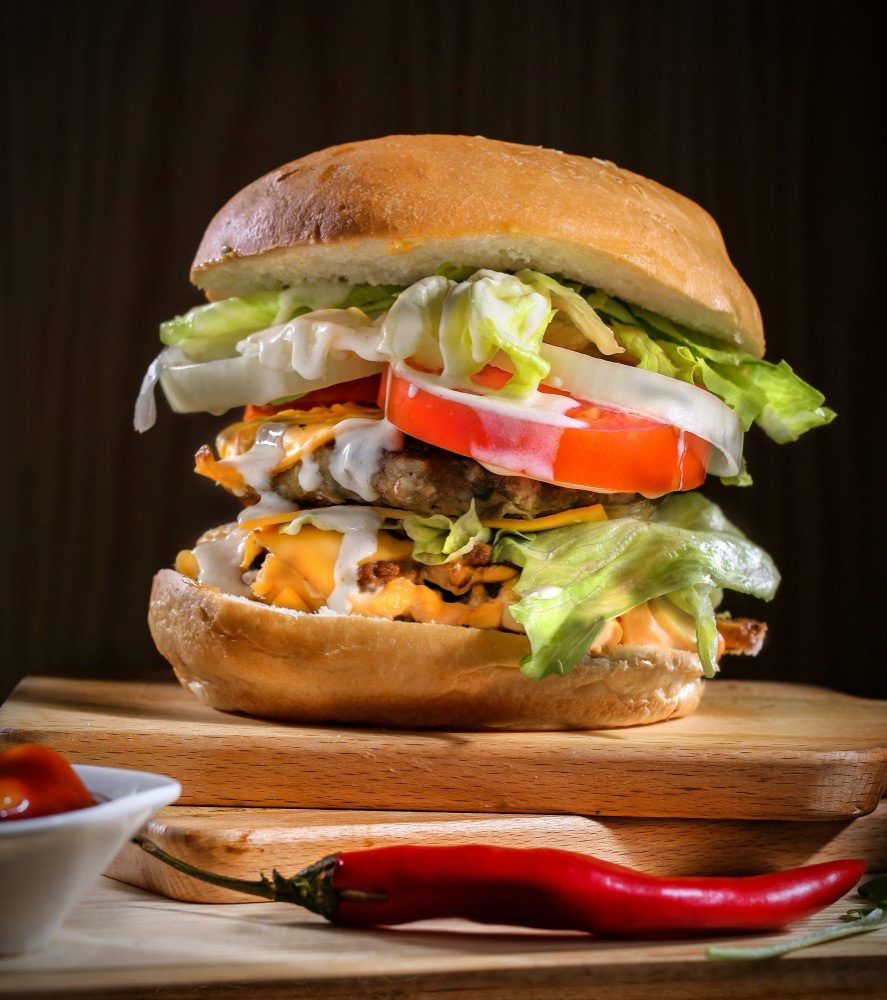
Photo credit to Rajesh TP. From Pexels.
5. Pricing tactics
Currency signs are another factor that can influence customers to purchase something. A Cornell study found that those customers who ordered from menus with no currency signs, ultimately spent more money than those who ordered from menus with currency signs. Menus with currency signs meant that it was easier for customers to track how much they were spending. Customers ordering from menus with dishes’ prices written out in words also spent more than those who ordered from menus with currency signs.

Content by Erika Escolero Orrego at TechRyde Inc.
Pricing strategies can also influence customers. The Charm Pricing strategy involves prices ending in 9. The Charm Pricing strategy has been shown to increase a product’s demand as it is perceived as ‘good value’. For example, when we see a price of $2.99 the first thing we see is the 2 and immediately think that it is closer to $2, making it seem like a great deal.

Content by Erika Escolero Orrego at TechRyde Inc.
Another pricing strategy is using price values that have fewer syllables. For example, $18.99 has 5 syllables instead of $17.97 which has 7 syllables. Even though $18.99 is higher than $17.97, The Journal of Consumer Psychology found that customers perceive the price with fewer syllables to be lower even if it is higher.
When adding all the prices to your menu you want to watch out for the typography. The typography is the size, font style, spacing, etc, in the font for the prices. The Journal of Consumer Psychology found that by putting the cent digits of price in a smaller font and slightly above the dollar digits of the price customers perceive the price to be lower than other prices.

Content by Erika Escolero Orrego at TechRyde Inc.
6. Be mindful of diets & allergies
Customers with allergies and diets have an awful and difficult time finding a restaurant where they can comfortably and safely eat without the constant stress and worry that they will eat a meal with an ingredient they are avoiding or are deathly allergic to. Being mindful of these things can give your restaurant a competitive advantage that maybe you had not realized before.
Restaurants are not legally obliged to inform customers of the ingredients of their dishes, but it can show customers that you care about them feeling comfortable and safe in your restaurant, helping improve their impressions of your restaurant. Providing ingredient information to customers gives them a sense of inclusiveness and welcoming, making them want to come back again in the future.
A study found that in 48% of allergic reaction cases in restaurants, the customer made the restaurant aware of their allergies in advance and did not receive any warning about the food having the allergen or that it had been in contact with the allergen. The same study found that in 78% of the allergic reaction cases in restaurants, a staff in the restaurant knew the food contained the allergen as an ingredient. All of these customers will never trust the restaurants again, reducing the number of regular and new customers they have. By being a better person and letting customers know of these allergens, you could be saving a life and gaining new customers that will come back in the future.
7. Effective menu typography
If customers can not read your menu, it does not matter if you have followed any of the other tips suggested above. Typography is an important part of planning and creating a menu. So customers can easily read your menu, you want to use easy-to-read fonts. For example, Helvetica, Bakerville, Open Sans, Georgia, PT Sans, PT Serif, Quicksand, etc.
When deciding on which fonts you will use in your menu and that best match your brand, remember to stick to 2 different fonts. You do not want to overwhelm customers with the number of fonts and different things that are on the menu.
Text alignment is a big factor in typography. Text alignment affects the way that we read and scan the content we are reading. For your menu, avoid using center alignment. Center alignment causes the reader to make additional eye movements to read the text in order and the extra work results in lower focus. That is why you want to stick to left alignment. Left-aligned text is much easier to read and eliminates unnecessary eye adjustments.
Lastly, font sizes are an important part of typography. You want to have a large font size for category headings. Medium font size for the name and description of the dish, and small font size for the price of the dish. Having a small font size for the price of a dish will help keep the focus on the dish and not the price to not discourage customers from purchasing an item.
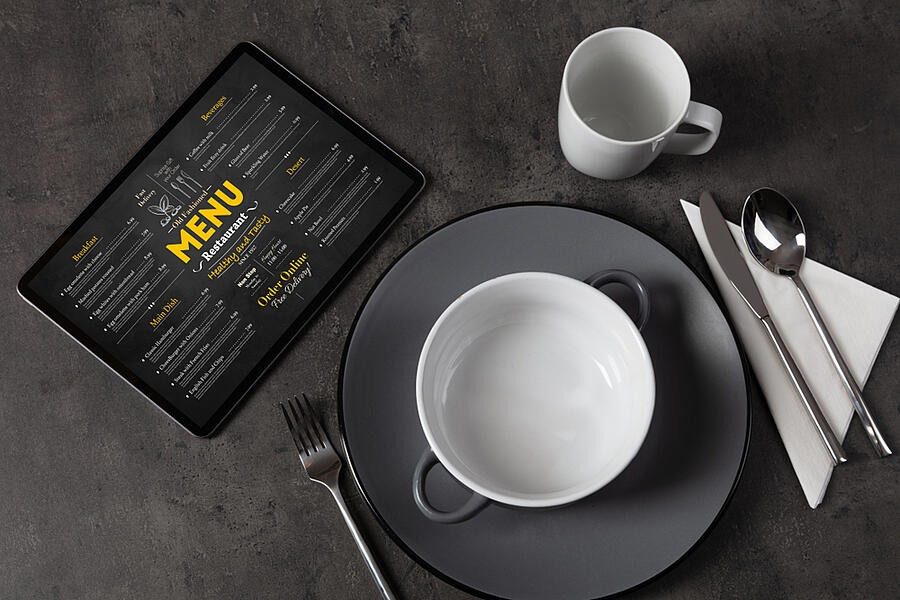
Following the seven suggested tips for planning and creating your menu can help your restaurant’s menu be a success and increase your sales. So why should you wait to implement some, if not all, of these changes?
Written by Erika Escolero Orrego, TechRyde Inc.
Photo Credit: Shutterstock, Pexels and TechRyde Inc.


